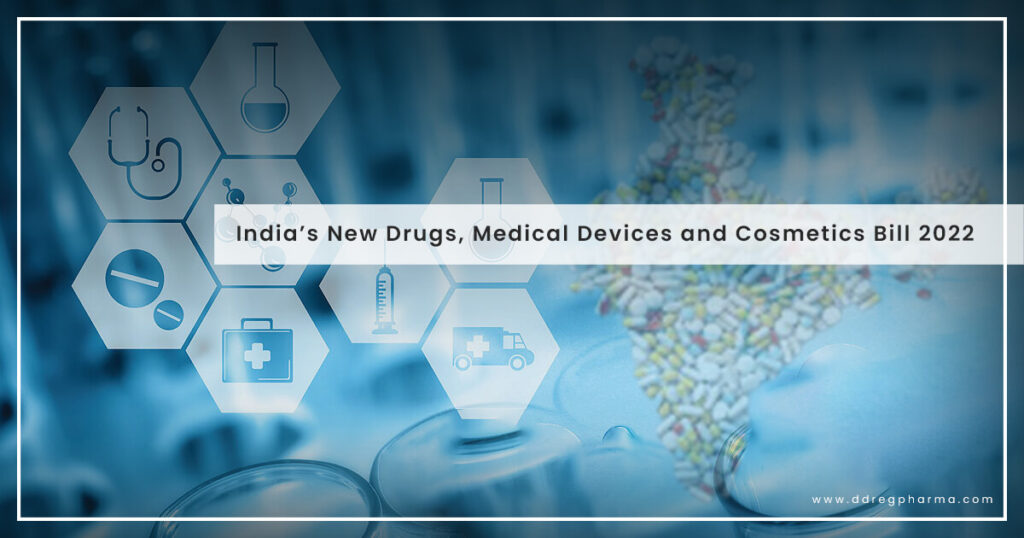Drug laws & regulations in India have roots that are almost 80 years old. India still follows drug laws that were framed in pre-independence time through Drugs & Cosmetics Act – 1940 and Rules 1945. The laws & rules have frequently been amended to address the challenges posed by Indian pharma Industry. However, the basic framework remained same over these years. Recently the Union Government of India has proposed the New Drugs, Medical Devices and Cosmetics Bill, 2022 that seeks to replace the pre-independence legislation.
The objective of seems multifold, key ones being
- the need to have contemporary and comprehensive legislation
- to introduce dedicated Medical Devices & OTC product legislation
Focus on Medical Devices
At present India’s dependence on imported medical devices is as high as 75%. In the financial year 2020-2021, India imported $6.24 billion worth of medical devices alone. The growth opportunities for the medical device industry are high, especially as nearly two-thirds of Indian medical equipment producers operate within consumables and cater to regional-use of equipment. To encourage the export of local medical devices, the draft of the proposal suggests incentives through tax rebates and refunds when exporting medical devices or any technological deliverables and encourages the government to increase spending with respect to “high-risk” medical device projects. Thus, there is strong effort to make India’s medical device market more independent and rely less on the import of high-end and expensive medical devices.
In FY 2021, the imports of pharmaceuticals (API/Drug Products/Excipients) was US$1.6 Bn(1) while the export was US$ 24.46(2). With the U.S. FDA’s crackdown on the Indian Pharma Industry – there is a clear need to upgrade the quality standards. It is anticipated that the New Bill and regulation thereafter shall address the unmet need to upgrade the quality standards for drug substance and drug product and bring them closer to ICH standards.
Other important aspects touched upon in the new bill include, e-pharmacies and clinical trials which are likely to face enhanced regulation, and penalties will be implemented for not paying compensation towards any morbidity or mortality during clinical trials for the medical device and drug. Often there are issues related to e-pharmacies where many do not hold licenses and sell drugs that are available with other licensed pharmacies; though they prescribe medicines and offer virtual consultations, they are not always transparent in their operations.
Furthermore, the bill addresses the Ayurvedic, Yoga and Naturopathy, Unani, Siddha, and Homeopathy (AYUSH) separately that will regulate Sowa Rigpa and Homeopathy in addition to Ayurveda, Unani, and Siddha drugs that are already regulated as per the current act.
To provide clarity and facilitate seamless operational functionality and implementation of the bill, separate Drugs Technical Advisory Board (DTAB) and Medical Devices Technical Advisory Board (MDTAB) have been proposed that constitute knowledgeable and experienced professionals and experts to assist the government in making technical decisions. These professionals will include people of various departments including but not limited to medical devices, science and technology, biomedical, biomaterials, electronics, and more.
The bill also proposes that the central government can make decisions for the Central Licensing Authority for 1) importing new drugs in the country, and 2) waiving clinical trial requirements for manufacturing of a drug, in response to an urgent situation for the sake of public health.
The need for staying updated with the ever-changing technology and patient health requirements is more than ever before. Reviewing and updating old legislations will only prove to be beneficial for improving patient care, enhancing public health, and in driving the growth of the medical devices industry of India.
References
Further reading

